
Menu

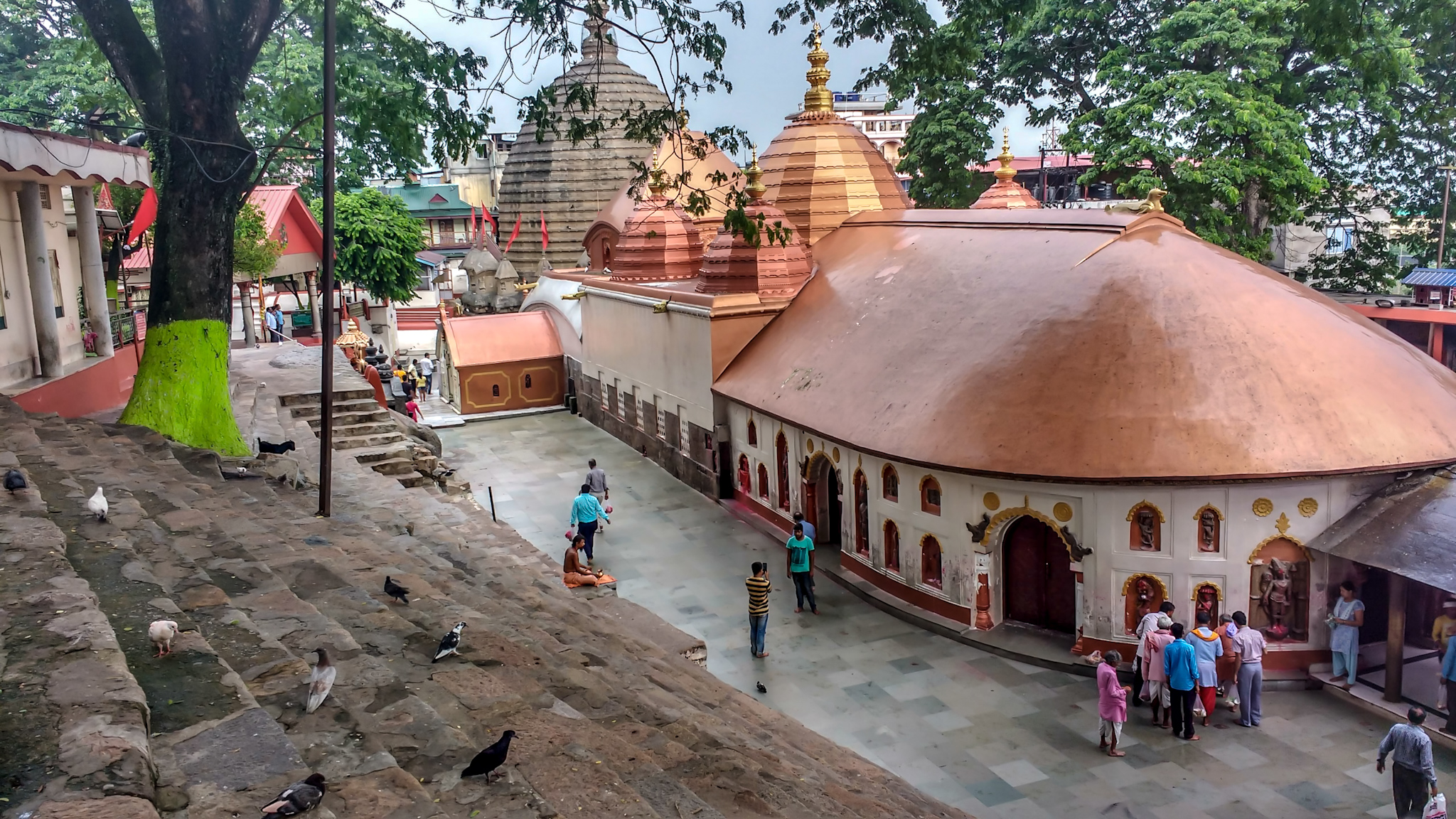
SurajJC, CC BY-SA 4.0 , via Wikimedia Commons
$250 CAD







Got Questions? Contact Us Now:
Contact Number:
+ 1 – 647-741-0400 (Canada & USA #)
Email:
contact@liveonlinepuja.com
Experience the divine blessings of Maa Kamakhya from the comfort of your home with Live Online Puja services. We connect you directly to the sacred rituals performed at the revered Kamakhya Temple by experienced and qualified temple priests. Whether it’s for career advancement, resolving life challenges, or seeking specific blessings, our personalized pujas and homams are conducted with utmost devotion and authenticity.
Book your Kamakhya Devi Puja today and experience the transformative power of Maa Kamakhya’s blessings and allow the sacred rituals to bring peace, prosperity, and success into your life.
The Kamakhya Devi Temple is not just a physical structure but a spiritual portal that connects devotees with the divine feminine energy of Shakti. The temple’s powerful Puja rituals, association with Tantric practices, and unique Ambubachi Festival make it one of the most visited and spiritually significant temples in India. Whether you seek fertility, prosperity, or spiritual awakening, the Kamakhya Devi Puja offers an opportunity to connect with the cosmic energies that govern the universe. The Kamakhya Devi Temple, located in Guwahati, Assam, India, is one of the most revered and powerful Shakti Peeths in the world. With our online service, you can now book a puja at this sacred site and experience divine blessings from the comfort of your home.
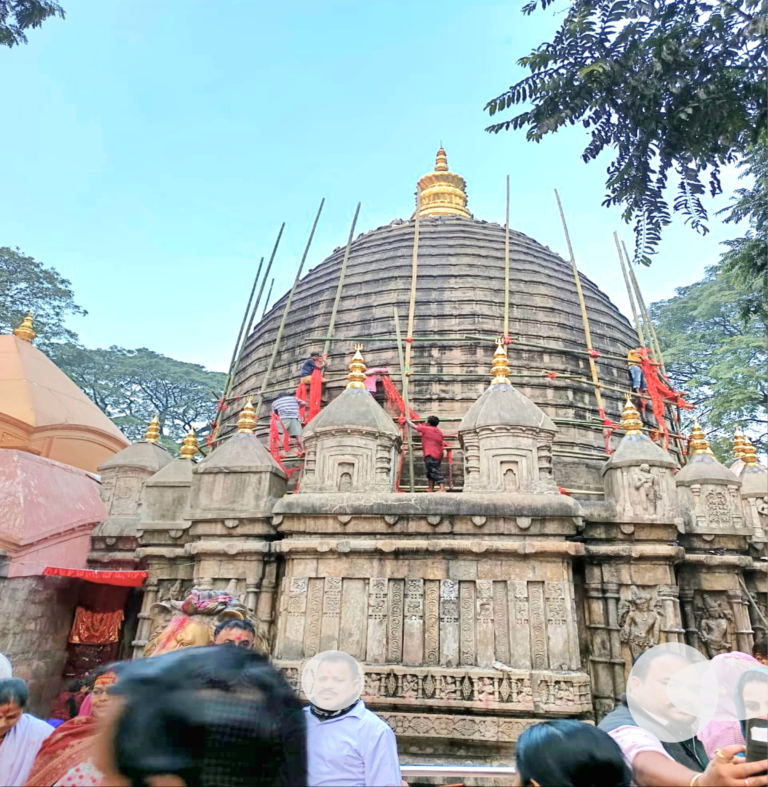
Reviews
Anjana Mani Sastry (USA)
We were facing constant hurdles as a family for a long time. Both me and my partner had issues at work and the stress was becoming overwhelming. That’s when we stumbled upon this website. We have immense faith in Kamakhya Devi Temple, but it seemed impossible to visit due to the financial constrains we were in, so we decided to give this a go. And I must say a million thanks to Pandit Atul Ji who arranged the Puja for us at Kamakhya Temple. We were able to view the recordings and I had tears in my eyes viewing the entire experience as the priests prayed for us and did hawan for our family at the place that is so close to our hearts. It’s been about 3 months since the Puja and things are looking a lot better for the both of us, so I wanted to personally thank Pandit Ji and live online puja platform.
Riddhi Sharma (Canada)
I have gotten many online Pujas done with Live Online Puja in the past few years, so when we got to know that they are now offering Pujas done right at Kamakhya Devi Shakti Peeth, we were very excited as we have heard many miraculous stories associated with the temple. The experience of this Puja was surreal. And it made us feel connected to our roots. Very happy with the experience and I would definitely recommend this Puja to everyone.
Cindy Koenemann (USA)
Parth Patel (Germany)
Thankyou for an another amazing puja for my family at kamakhya temple and pranam to Pandit ji!

The Kamakhya Devi Temple is located on Nilanchal Hill, approximately 7 kilometers from Dispur, the capital of Assam, and 10 kilometers from Guwahati. As one of the 51 Shakti Peeths, this temple is dedicated to the goddess Kamakhya, a form of Maa Shakti, and symbolizes feminine power and fertility. According to scriptures, Kamakhya Temple is considered to be the Mahapeeth of all the Shakti Peethas.
Kamakhya Devi is revered as the Goddess of Desire, Illusions, and Relationships. It is believed that the Yoni (vagina) and womb of Goddess Sati fell here, making it an incredibly powerful and sacred site of feminine energy. The temple’s sanctum sanctorum does not house an idol but enshrines a natural rock crevice, symbolizing the goddess’s manifestation as the yoni (genitals-vagina) and womb, representing fertility and creation. This unique feature makes the temple a pivotal site for tantric worship and spiritual regeneration.
There is a Kund (small pool) in the temple, which is always covered with flowers. Water always comes out of this pool. The yoni (vagina/genitals) and womb of Goddess Sati are worshiped in the temple, and due to the presence of the yoni part, the mother also menstruates here. The Yoni Mudra Peeth of the Goddess is situated ten steps below in a cave, where the eternal lamp is always burning. The route to and from here is made different.
Every year during the Ambuvachi fair, the water of the nearby Brahmaputra River turns red for three days. It is believed that this red color of the water is due to the menstruation of Mata Kamakhya. Then after three days, a crowd of devotees throngs the temple for darshan. It is believed that when the mother is menstruating for three days, a white-colored cloth is laid inside the temple. After three days, when the doors of the temple are opened, then that cloth is soaked in red color from the raj (bleeding during menstruation) of the mother. This cloth is called Ambuvachi cloth which is later offered to the devotees along with Prasad on this special day.
Devi Temple reveres menstruation as the divine feminine power that symbolizes the ability to give birth. This is one of the most distinct aspects of the Kamakhya Devi Puja, where the menstrual cycle of the Goddess is celebrated and worshipped by devotees.
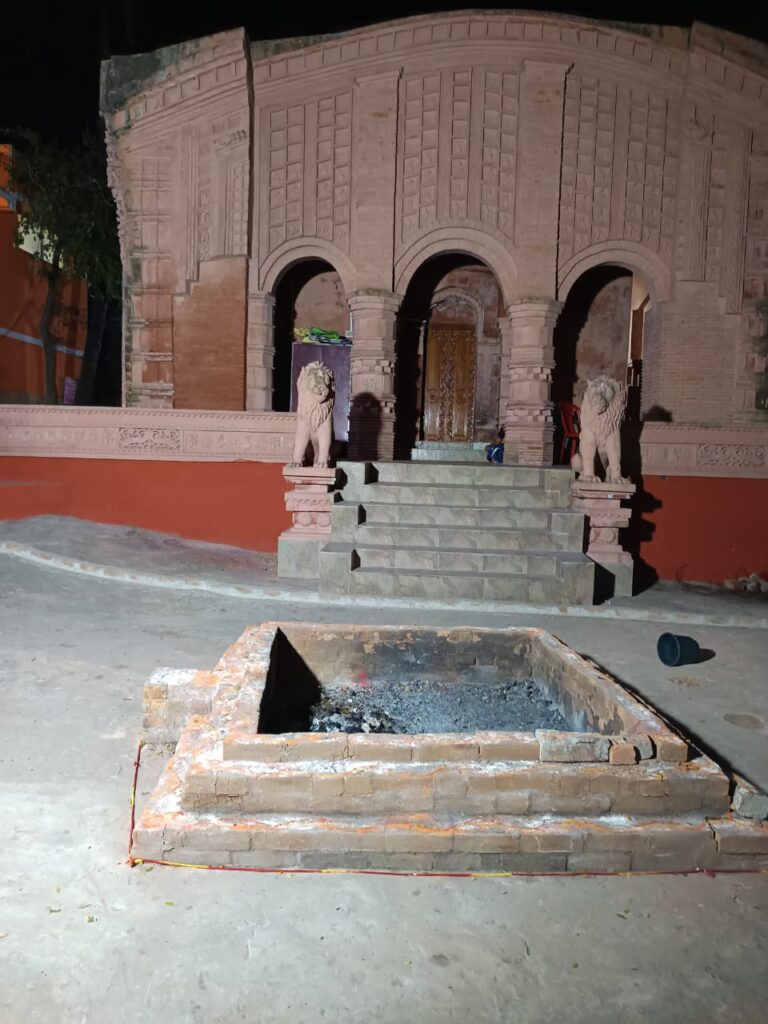
Performing Puja at Kamakhya Devi Temple holds deep spiritual significance for devotees seeking blessings. The Kamakhya Devi Puja is particularly sought after by those who wish to invoke the power of Goddess Shakti to bring success, fertility, and prosperity into their lives. The worship at this temple is associated with the 64 Yoginis and Ten Mahavidyas (Great Wisdom Goddesses) namely, Bhuvaneshwari, Bagla, Chhinna Mastika, Kali, Tara, Matangi, Kamala, Saraswati, Dhumavati, and Bhairavi. Although all Shakti Peethas have their own importance, Kamakhya Shakti Peeth is often considered the most supreme. According to Kalika Purana, it was this divine place where, Kamadeva was consumed by Shiva’s Tri Netra (third eye) and got the boon of attaining his former form. Here the fruit of desire is attained.
The Kamakhya Devi Temple holds significant importance for Tantriks and Aghoris due to its association with Tantric practices and black magic rituals. Many Tantriks and Aghoris perform sadhana (spiritual practices) at the temple, aiming to achieve Siddhi (spiritual perfection) and enhance their understanding of the cosmic forces that govern the universe. The temple is especially famous for its association with Shakti and Tantrik worship, and it is believed to be one of the most powerful places for Shakti Sadhana.
Many Tantriks and Aghoris come here to seek spiritual enlightenment, perform rituals for personal gain, or acquire knowledge of the deeper aspects of the universe. This makes Kamakhya Temple a key site for esoteric spiritual practices, which are often carried out in secrecy and with great reverence.
One of the most intriguing elements of the Kamakhya Devi Puja is the Yoni Mudra Peeth, which lies in a cave beneath the temple. This sacred spot is where the eternal lamp burns, symbolizing the eternal energy of the Goddess. By performing Puja at Kamakhya Devi Temple, and intense Sadhna, devotees can unlock this divine energy and experience spiritual transformation.
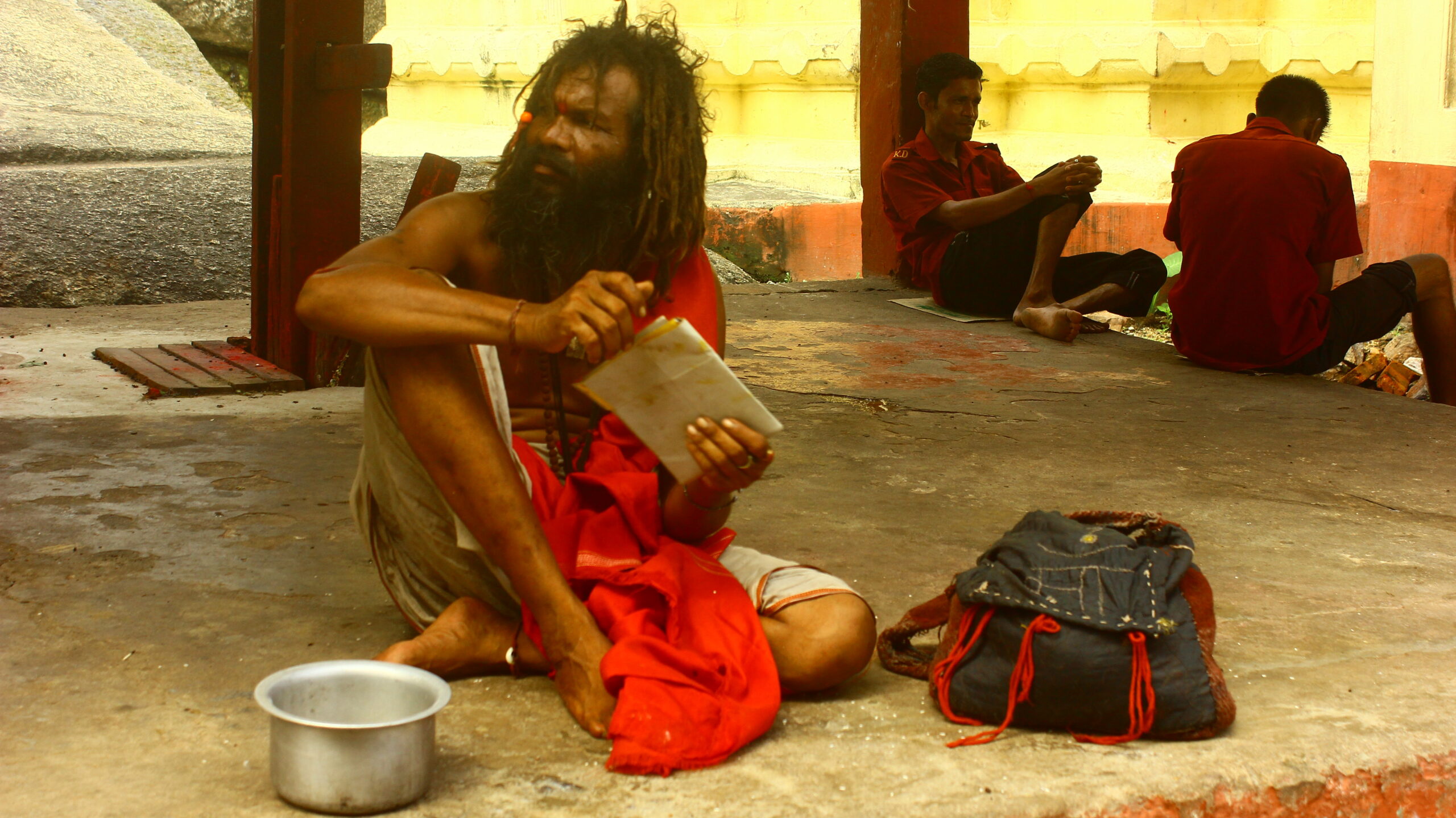
Deeporaj, CC BY-SA 4.0, via Wikimedia Commons
Maa Kamakhya, one of the most revered deities of Shakti and a central figure in the Kamakhya Devi Temple, is the embodiment of Mahashakti – the ultimate creative and destructive energy of the universe. Worshipping Maa Kamakhya brings blessings of fertility, prosperity, protection from enemies, and the fulfillment of one’s deepest desires. The rituals associated with Maa Kamakhya Puja are deeply sacred, invoking the goddess’s powerful energies to bring peace, success, and spiritual growth into the lives of devotees.
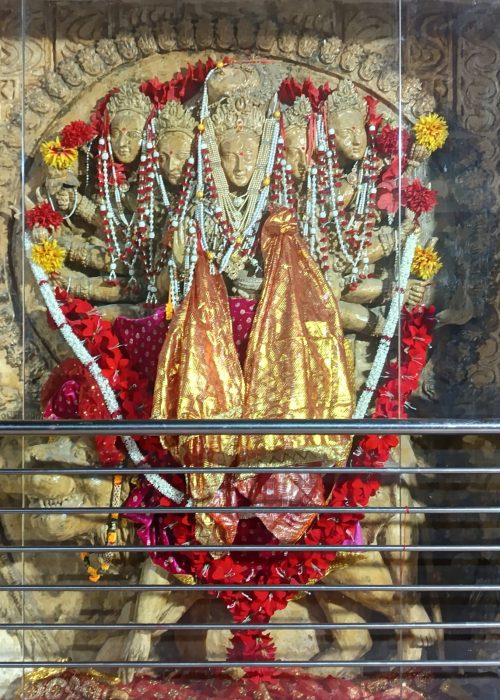
Although all days are considered auspicious for Mata’s Puja, but Fridays are considered especially auspicious for worshipping Maa Kamakhya if the Puja is done for financial gains. Friday is ruled by Shukra Grah (Planet Venus), which governs love, luxury, prosperity, and artistic abilities. Friday is seen as a day to connect with Shakti, the divine feminine energy, and worshipping the Goddess on this day ensures the granting of blessings such as luxury, comfort, affluence, artistic talents, vitality, and passion. Maa Kamakhya, being the personification of Mahashakti, is revered as the source of creation and the embodiment of fertility and desire. Performing Maa Kamakhya Puja on Fridays can alleviate financial losses, restrict enemies, and help fulfill personal desires. Devotees believe that the Fridays Puja brings prosperity in business and removes obstacles in life.
Each day of the week holds a special significance for Maa Kamakhya’s Puja, so our Pandit Ji may suggest a different day for the Puja based on the Sankalp/wish that the devotee wants to attain from the Puja.
The origin of the worship of ‘Mata Kamakhya’ is deeply rooted in the legend of Mata Sati, the wife of Lord Shiva and daughter of King Daksha. King Daksha disapproved of his daughter’s choice of husband and did not invite Lord Shiva or Mata Sati to a grand yagna he organized for all the deities. Against Lord Shiva’s advice, Mata Sati attended the yagna. There, King Daksha insulted Lord Shiva, which enraged Mata Sati. In her fury, she threw herself into the havan kund’s fire, sacrificing her life and making the yagna impure. As the all-powerful Adishakti, Mata Sati left her body to be reborn as Goddess Parvati.
Devastated by her death, Lord Shiva carried Mata Sati’s body on his shoulder and began performing the Tandava, the dance of cosmic destruction. His grief and rage threatened to destroy the universe. To pacify him, Lord Vishnu used his Sudarshana Chakra to sever Sati’s corpse into 51 pieces, which fell across the Indian subcontinent. Each location where a part of her body fell became a Shakti Peetha. The Kamakhya Temple marks the place where her yoni (vagina) and womb fell, symbolizing fertility and creation. Thus, the temple does not house an idol but a kund covered with flowers that represents the essence of the goddess is worshipped instead.
All devotees of Maa Kamakhya celebrate the Ambubachi Festival every year. The word Ambubachi comprises two words, ‘Ambu’ and ‘Bachi,’ in which ‘Ambu’ means ‘water’ and ‘Bachi’ means ‘overflow.’ This word refers to the power of women and their birth potential. This fair is held every year in June when Maa Kamakhya menstruates. During the Ambubachi Yoga festival, the doors of the sanctum sanctorum of Maa Bhagwati are automatically closed, and her darshan also becomes prohibited. At this time, the water of the Brahmaputra River turns red for three days. After three days of the Goddess’s menstrual cycle, the temple doors are reopened on the fourth day. The Goddess is bathed in Brahma Muhurta (an auspicious time) and special Puja rituals are performed. Ambubachi Prasad, a red-colored cloth soaked in the menstrual blood of the Goddess, is then distributed to the devotees. This cloth is believed to hold immense spiritual power and is considered a blessing from the Goddess herself. Devotees often wear this cloth to fulfill their wishes and gain the Goddess’s divine protection.
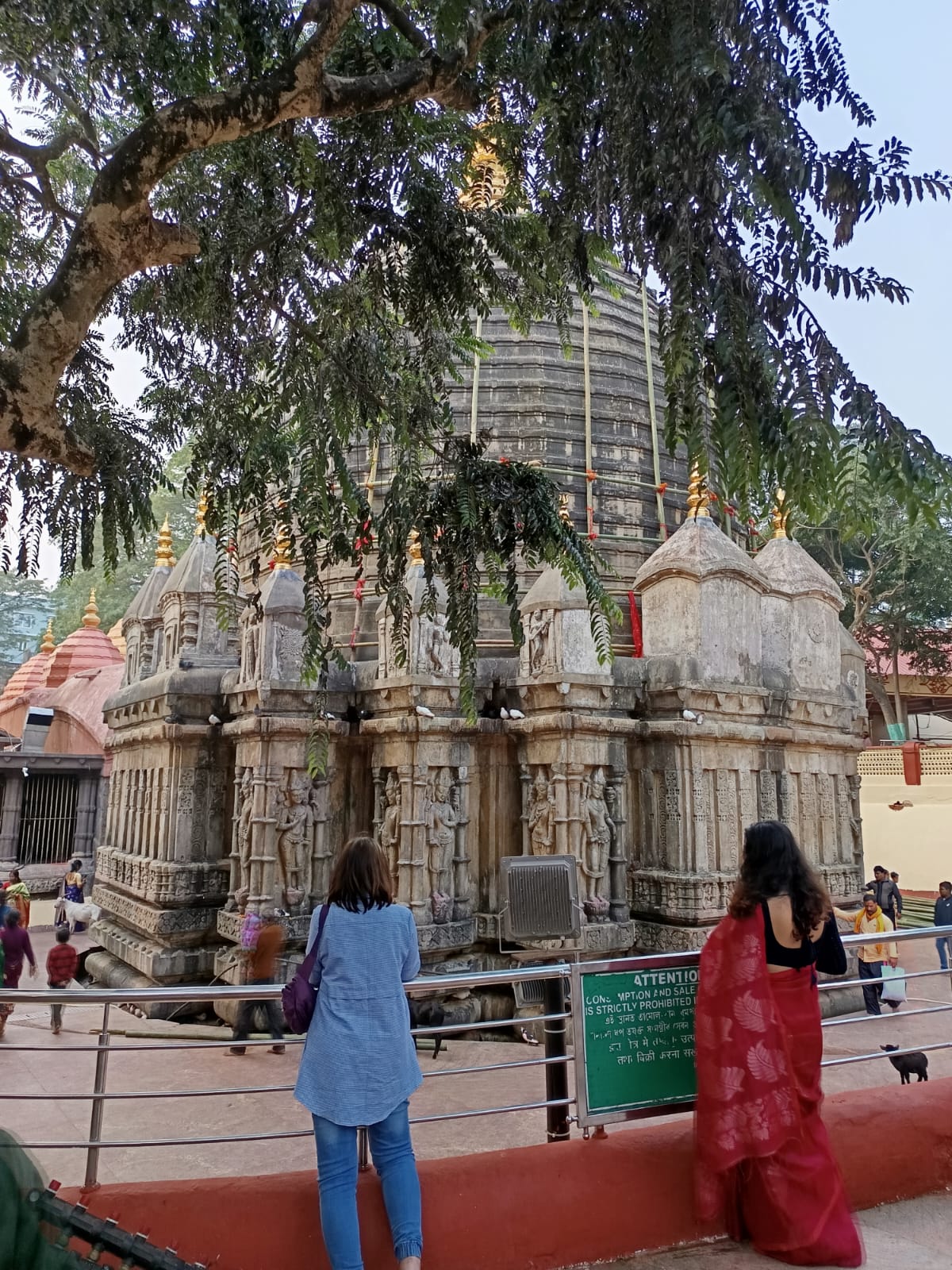
A Bhairav Darshan is an essential part of the pilgrimage to Kamakhya Devi Temple. There is a temple dedicated to Umanand Bhairav, a guardian deity of Kamakhya, situated on an island in the Brahmaputra River. According to belief, visiting Umanand Bhairav Temple and seeking his blessings completes the pilgrimage and ensures that the worshipper’s journey to Kamakhya is spiritually fulfilled. The temple is located on Madhyaanchal Parvat, a sacred mountain, and is linked to the mythological story of Kamadeva, the God of love,it is here that Lord Shiva, who was in samadhi (Penance), was hurt by Kamdev by hitting him with Kamaban (love arrow). Upon awakening from Samadhi, Lord Shiva burnt him to ashes with his third eye. Kamadeva was given life again on the Nilanchal mountain, the Mahatirtha (Supreme Pilgrimage) of Bhagwati; hence this area came to be known as Kamrup.
The Maa Kamakhya Homam is a powerful Vedic ritual that brings about immense positive transformation in one’s life. This sacred Homam is associated with the Goddess Kamakhya, who is revered as Mahashakti — the embodiment of the creative power and the ultimate source of fertility and desire. Performing this Homam with full devotion has the potential to resolve numerous life challenges, particularly those related to marriage, relationships, personal struggles, and even business or career.
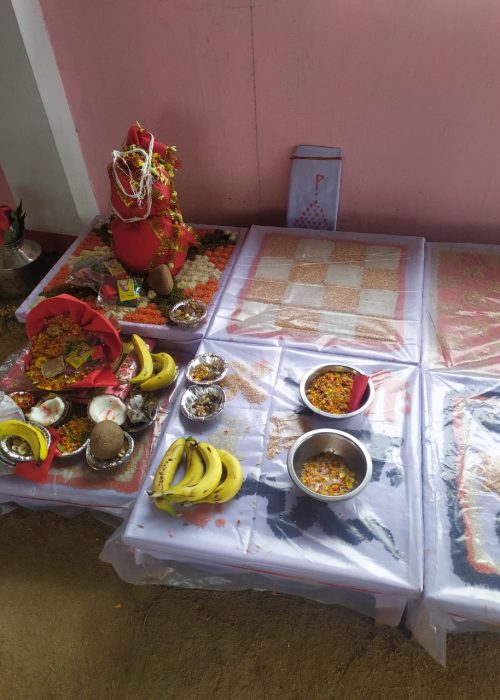
Maa Kamakhya Sadha involves a powerful tantric practice that must only be performed under the guidance of a knowledgeable and experienced Guru (spiritual teacher). This form of prayer is considered highly esoteric and intricate, designed to awaken deep spiritual energy within the practitioner. By invoking Maa Kamakhya, the embodiment of Shakti, this devotional process is believed to bring about profound transformation, fulfilling desires and leading the practitioner on a path of spiritual awakening and fulfillment.
The Maa Kamakhya Sadhna is not only a practice of stillness but also an active process of creation. It is said that through the proper application of this prayer, one can bring the impossible into reality, manifesting their deepest desires. This practice involves tapping into powerful energies, activating every molecule of the body, and unlocking unique energy that leads to physical, mental, and spiritual well-being.
For those who have mastered the Sadhna, the results are extraordinary. Sannyasis (hermits) who engage in this practice are believed to experience miraculous feats, such as:
Through Maa Kamakhya Meditation, devotees believe that they can achieve spiritual immortality and eternal happiness, experiencing life in a deeply transformative way that transcends the limitations of the ordinary world.
Performing Maa Kamakhya Sadhna requires focused intention and the correct procedure. Please only undertake the prayers after initiation and under the guidance of a Guru.
PREPRATION:
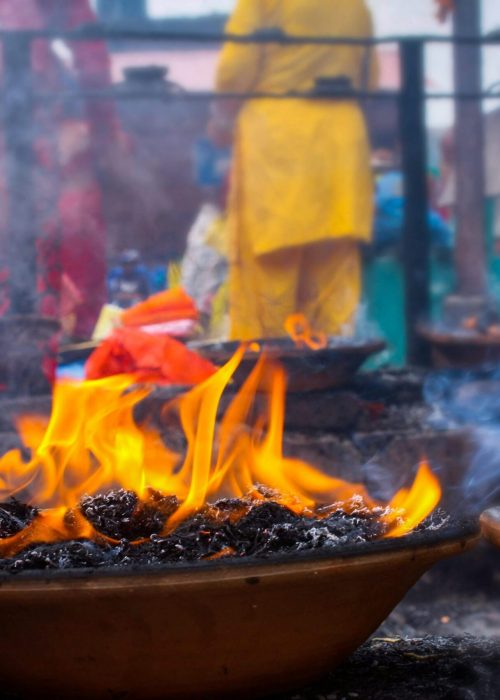
Final Step is to choose one of the following Mantras and chant it 551 times to invoke blessings of Maa Kamakhya:
Beej Mantra of Maa Kamakhya Devi
क्लीं क्लीं कामाख्या क्लीं क्लीं नमः
Kleem Kleem Kaamaakhya Kleem Kleem Namah
Maa Kamakhya Devi Salutation Mantra
ॐ ह्रीं क्लीं कामाख्या नमः
Om Hreem Kleem Kamakhyae Namah
Maa Kamakhya Puja Mantra
कामाख्याये वरदे देवी नीलपावर्ता वासिनी
Kaamakhyaaye Varde Devi Neelapaavarta Vaasini
Maa Kamakhya Puja Mantra
|| त्रिं त्रिं त्रिं हूं हूं स्त्रीं स्त्रीं कामाख्ये प्रसिद स्त्रीं स्त्रीं हूं हूं त्रिं त्रिं त्रिं स्वाहा ||
Treem Treem Treem Hoom Hoom Streem Kamakhye Prasidh Streem Hoom Hoom Treem Treem Treem Swaha
These mantras invoke Maa Kamakhya’s energy and facilitate the manifestation of your desires. The repetitive chanting activates deep, transformational energies within the practitioner.
At the end of the meditation, offer flowers to Maa Kamakhya as a sign of gratitude for her divine presence and blessings and pray for forgiveness for any mistakes or unintentional errors during the meditation process. This ensures that any negative energies are cleared, and the practice remains pure.
Important Notes:
Navratri is one of the most significant festivals dedicated to the worship of Maa Kamakhya. The festival celebrates the victory of Shakti over the forces of darkness and is observed with great reverence at Kamakhya Temple.
Durga Puja at Kamakhya is unique and significantly different from Durga Puja celebrations elsewhere. It is celebrated for fifteen days—beginning with the Navami of Krishna Paksha (dark fortnight) and ending with the Navami of Shukla Paksha (bright fortnight) in the month of Ashwin. This extended period of worship is known as Pakhua Puja.
During Durga Puja at Kamakhya, several sacred rituals are observed, including:
During this time, the temple and the surrounding areas are filled with devotees, performing prayers, rituals, and celebratory processes. Durga Puja at Kamakhya is a grand occasion that brings together thousands of people in devotion and celebration of Maa Kamakhya’s divine powers.
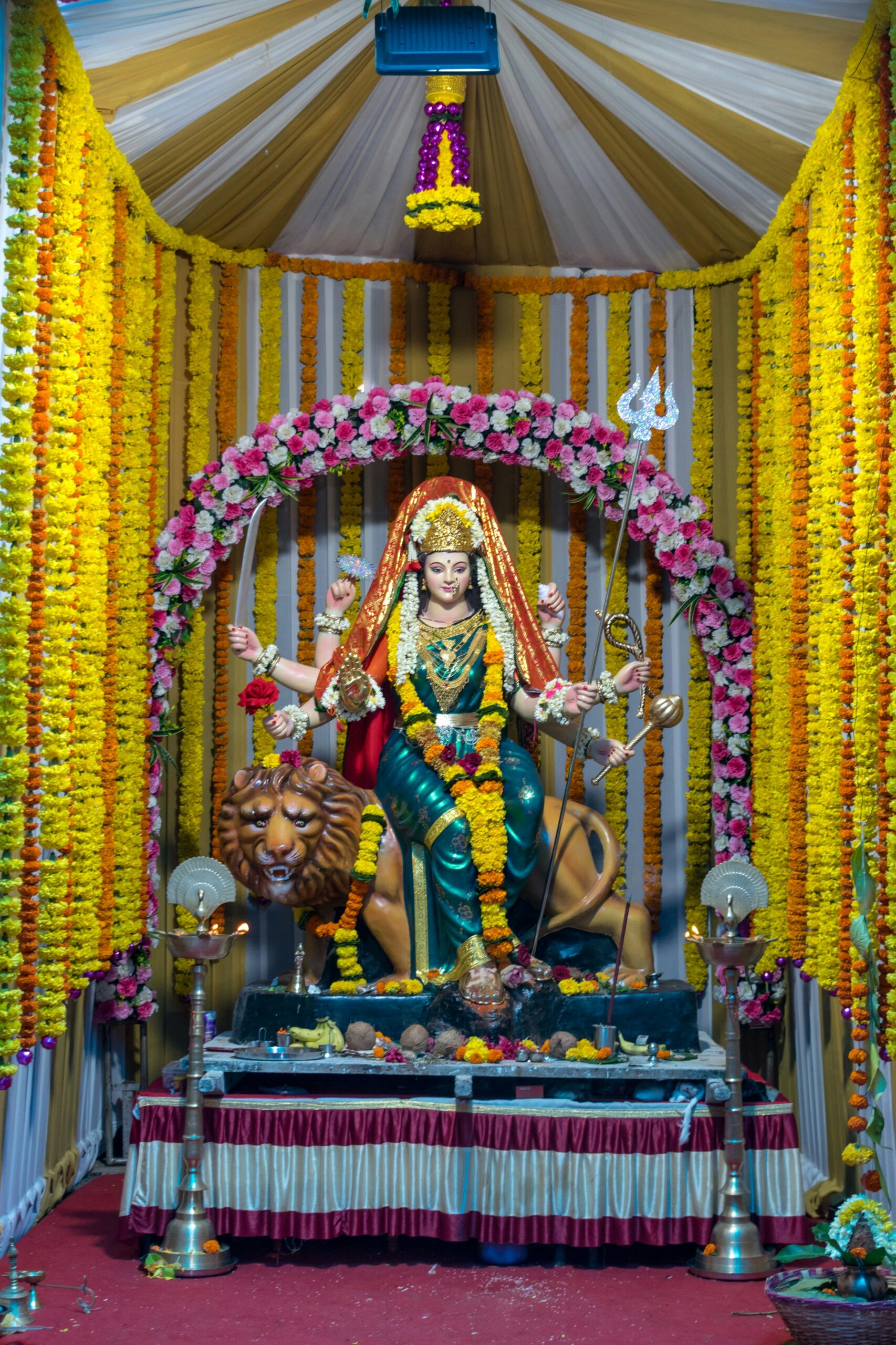
One of the most integral parts of the worship at Kamakhya Temple is Kumari Puja, which is a form of virgin worship. A virgin girl, symbolizing the divine feminine energy, is adorned and worshipped as an incarnation of Maa Kamakhya.
In this ritual, the virgin girl is dressed in a new red sari, adorned with garlands, sindur (vermilion), jewelry, and perfumes. She is treated as the physical manifestation of the Goddess, and through this worship, devotees seek blessings of health, prosperity, and protection from harm. The Kumari Puja also has deep philosophical significance, as it emphasizes the importance of women as the creators, nurturers, and stabilizers of the world.
The Kumari Puja symbolizes the feminine aspect of the universe, and through the ritual, the Goddess is said to remove obstacles and grant protection to her devotees. The maiden represents the primal energy of the cosmos, and her worship is considered a means of establishing the power of Shakti in the world.
The legend of Mata Kamakhya is intertwined with the story of Narakasura, a powerful demon king. Narakasura, driven by desire, sought to marry the Goddess Kamakhya. Mata Kamakhya, known for her playful nature, set a challenge before him: to build a staircase from the base of the Nilachal Hill to her temple before dawn. Narakasura worked tirelessly, but Mata Kamakhya used her divine powers to deceive him by making a rooster crow prematurely, signaling the dawn. Narakasura, tricked into thinking he had failed, abandoned the task. The place is now known as Kukurakata, and the unfinished staircase is called Mekhelauja Path.
Narakasura’s Tyranny
Narakasura’s power grew as he conquered both the earth and heavens, overthrowing Indra, the King of the Gods. His tyranny reached new heights when he stole the earrings of Aditi, the goddess of the heavens, and kidnapped 16,100 women. In desperation, the Devas turned to Lord Vishnu for help. Vishnu incarnated as Krishna to defeat Narakasura and restore peace.
The Battle with Krishna
Krishna, accompanied by his wife Satyabhama, waged a fierce battle against Narakasura. Despite Narakasura’s strength, Krishna’s divine powers overpowered the demon. Narakasura attempted to strike Krishna with a trident, but Mata Kamakhya’s illusion distracted him, allowing Krishna to behead him with his Sudarshana Chakra. Krishna freed the 16,100 women, and to honor them, he married all of them.
Naraka Chaturdashi
Before his death, Narakasura asked Satyabhama for a boon to celebrate his death with lights. This is why the day before Diwali is celebrated as Naraka Chaturdashi, marking the victory of Krishna over Narakasura and the restoration of dignity to the women.
The legend of Narakasura showcases the power of Mata Kamakhya’s illusionary abilities and symbolizes the triumph of good over evil. It highlights her role as a goddess of creation and protection. The story also emphasizes the protection of women and the importance of divine intervention in overcoming tyranny.






